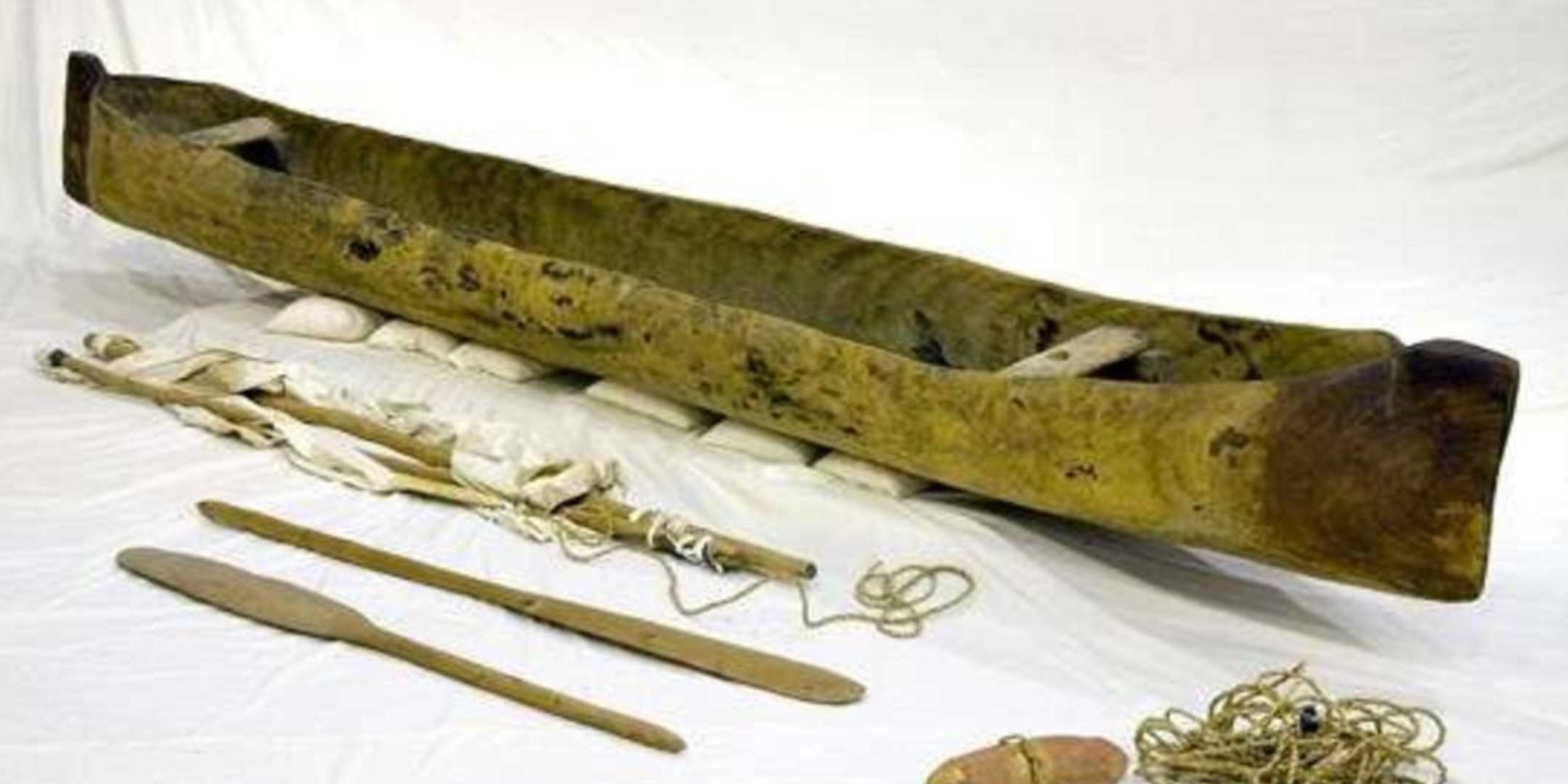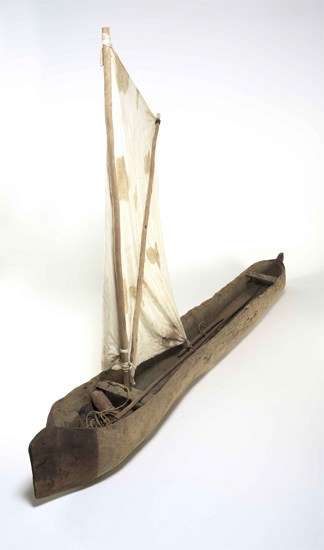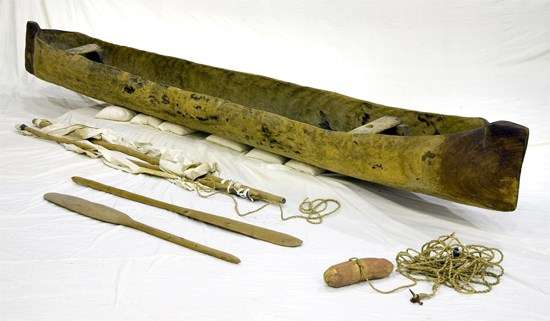

Annie Karrakayn, Ida Ninganga, Isaac Walayungkuma, Yanyuwa and Garrawa, Rra-alwanyimara, dugout canoe, 1988 Paperbark tree, 496 x 60am (length x bredth)
Yolngu country, eastern Arnhem Land, and the wet season is slowly seeping into the land. Three men haul a dampened sheet of stringy bark from a smouldering fire that carries the scent of the bush. Carefully, they push one end of the heated bark through a narrow gap between two sturdy branches driven almost parallel into the ground. Like wet, pliable leather, the warm and supple end folds upwards, and the sides come together dripping moisture at the base. The men then bind the top of the branches together tightly and, using a sharp blade, make a long angled cut, forward and down to the bottom tip of the folded end of the bark. Holes are pierced along the raw edge and fingers deftly thread fine, damp bark strips to sew the sides together. The prominent bow of a derrka has been created, and a canoe unique to Australia has begun to form, built with knowledge and skills that are thousands of years old.
The museum’s collection of Aboriginal and Torres Strait Islander watercraft highlights their diverse range, born from the Australian environment and shaped by the first people to live here. These craft are all recent commissions – in them, the makers and their communities are keeping alive the knowledge, traditions and culture handed down for countless generations. In early European reports, the watercraft were described as crude or simple, but they are now appreciated for their striking and bold shapes and a construction that reflects their builders’ strong culture and deep understanding of the environment and the materials available.

Annie Karrakayn, Ida Ninganga, Isaac Walayungkuma, Yanyuwa and Garrawa, Rra-alwanyimara, dugout canoe, 1988 Paperbark tree, 496 x 60am (length x bredth)
David Payne
Curator, Australian Register of Historic Vessels
An excerpt from 100 Stories from the Australian National Maritime Museum. Available as a free eBook for iPad from the iBookstore or hard copy versions available for purchase through our museum store.
